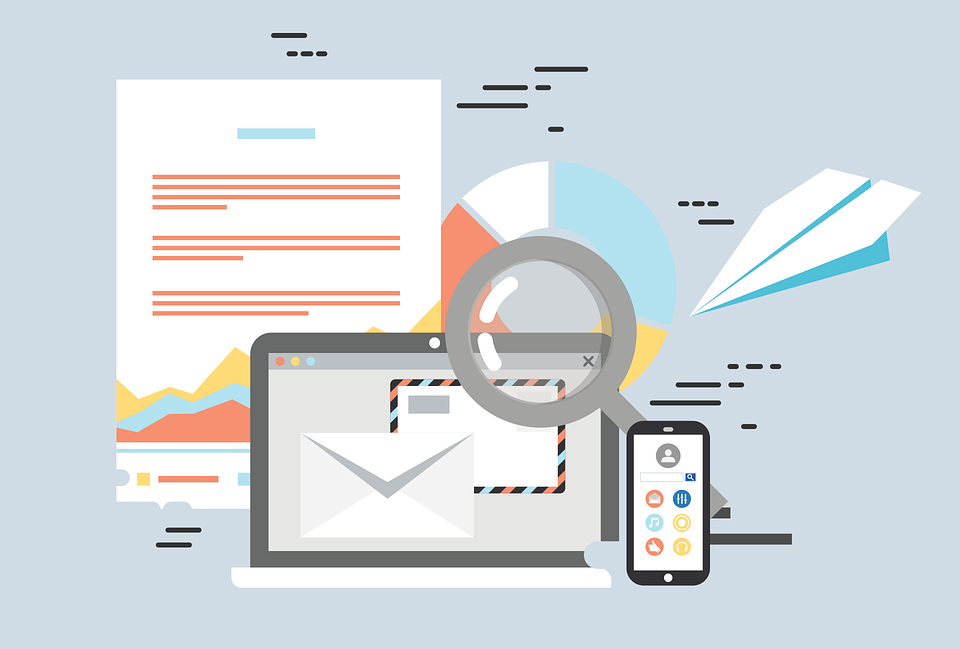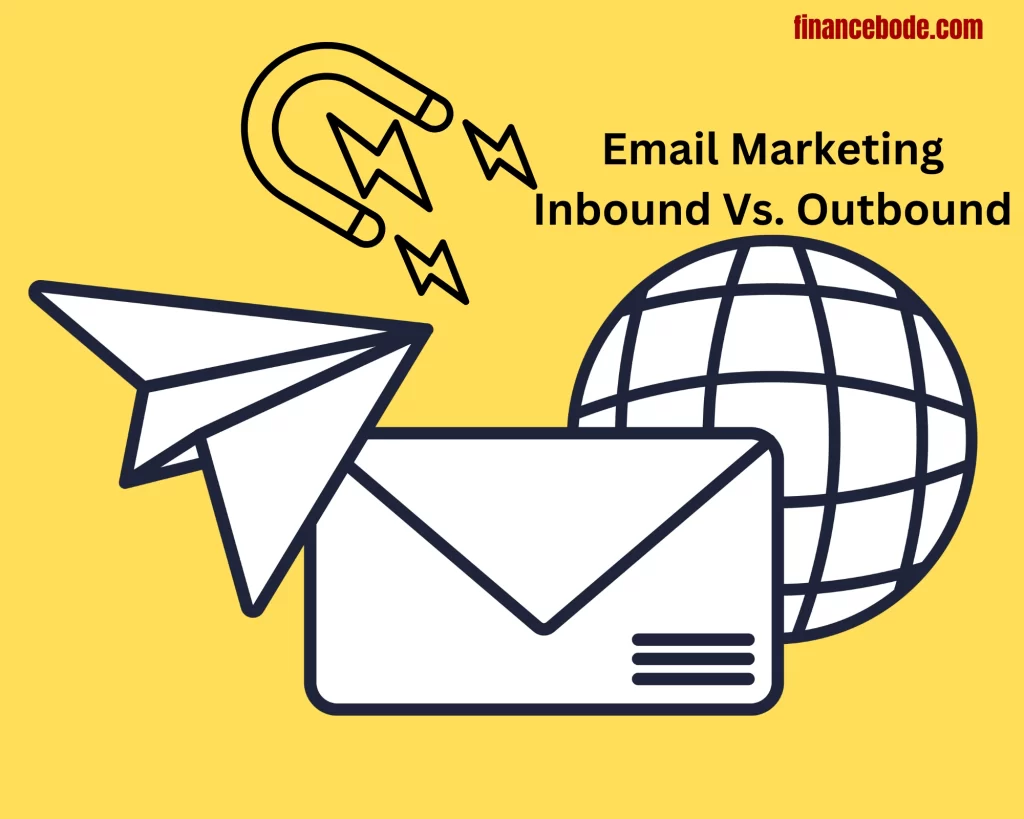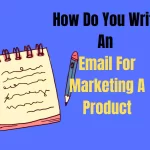Email marketing: Outbound vs. inbound? I have never been in favor of categories that are too closed. Even when talking about digital marketing, I still believe that it is not a precise science. Digital marketing has its intricacies, and as much as we want to equip it with technology. But we must never forget that it is a human problem.
Inbound email marketing focuses on providing excellent content to attract leads and create long-term connections with clients. In contrast, outbound email marketing includes delivering promotional messages to a specific list of subscribers to produce instant sales.
In this article, Financebode.com will assist you in discovering how to perform email marketing through Outbound and Inbound approaches. Furthermore, I will clearly differentiate between these two tactics. From there, you can give yourself the answer to the question of Email marketing Inbound or Outbound more effectively.
Now let’s get started.
In This Context, What Is Email Marketing?
A digital marketing tool that enables us to deliver communications (emails) in a vast fashion (to a significant number of people at the same time, following a set of criteria and conditions). In my view, it is vital to hypothesize about marketing. You have to elevate it and perceive it as something beyond a sequence of separate events. It is vital to start generating concerns and questions that enable us to supply the sector with a particular criterion and depth. It’s excellent to start perceiving activities with a more planned and less automatic attitude.
Pause for a while today to reflect on what is behind…
What Is Digital Marketing
Sometimes I think of digital marketing as a toolkit. When you open it, you find search engine marketing (SEO and SEM), websites and landing pages, content marketing, social networks, e-commerce, web analytics, and – of course – email marketing.
Some of these tools are easy to classify as outbound or inbound marketing, but in others, there are certain nuances, and, always, it will depend on the actions and the strategy.
Let’s remember some main definitions:
What Is Outbound Marketing?
In this article, we talk in-depth about it, but I will leave a reference definition as quickly and direct as possible:
Outbound marketing is the set of marketing actions that aim to attract consumers through direct and unidirectional methods. That is, it assumes a proactive and direct approach to marketing with the aim of making a sale.
What Is Inbound Marketing?
We also have this article where we talk in-depth about it, but I will leave a reference definition as quickly and direct as possible:
¨ Inbound marketing is a methodology that allows potential customers to find you more easily on the internet, knowing your brand, products, and services through valuable content that is oriented to their questions, doubts, and needs. ¨
Inbound Vs Outbound Email Marketing And Their Benefits

Is email marketing an Inbound or Outbound Marketing strategy? Marketers deploy this channel in both ways. To better understand the difference between Inbound and Outbound Email marketing, we will look at three aspects:
1. Audiences & Interactions
2. Reach and speed
3. Expense
Inbound Email Marketing
Those emails attract customers by creating valuable content and experiences tailored to them. These are often delivered to prospective consumers who have already indicated an interest in a given product or service or have already enrolled on a mailing list.
For example, we may speak about newsletters, content summaries, and discount vouchers for recurring clients.
Inbound marketing is a company approach that draws consumers by producing personalized content and value experiences. It includes blog pieces, social media postings, infographics, and emails.
Inbound Email Marketing Audience and interactions
Inbound email marketing is based on a marketing funnel. That means you’ll need to plan content for every stage of the buyer’s journey. From attracting strangers into leads, getting them interested, and converting them into customers.
Building brand awareness via blog articles, social media, and SEO is the initial step in this process. When visitors are interested, they will opt-in to the email list. And this is where inbound email marketing comes in. By inbound marketing sends targeted messages to the audience. This helps marketers increase their chances of persuading visitors to complete the purchase journey.
Inbound Email Marketing Reach And Speed
Inbound Marketing aims to engage an interested audience with relevant, valuable content, such as blog posts and social media posts. This process takes time. Building a list of thousands of emails can take months and years. But once you’ve been “found” by your audience, the growth rate will be faster than outbound email marketing.
Inbound Email Marketing Costs
Budget is not a significant factor in inbound and outbound email marketing. But there is still a difference between these two methods. Inbound email marketing is 62% lower than outbound marketing for a number of reasons:
1. First, the ROI is higher because you’re targeting a list of interested leads.
2. Second, an inbound list of quality subscribers. Therefore, the volume is usually smaller than that of Outbound listings. This makes inbound email marketing strategies lower in cost.
Outbound Email Marketing
Outbound Email Marketing Audience And Interaction
The primary distinction between inbound and outbound email marketing is how audiences are targeted and interacted with.
Outbound mailing does not need receivers to opt-in to get the information sent, while inbound mailing only targets persons who have demonstrated an interest in your product or service.The question is about getting too hot or cold lists.
Outbound Email Marketing Reach And Speed
Another significant difference between outbound and inbound is the reach and speed of each method. With outbound email marketing, we would see a greater reach in a shorter period of time.
Is engagement more important than reach?… or, what good is it for us to reach millions of people if they are not interested or committed? It will always depend on what we are looking for (strategic objectives) and the point of the journey which the consumer is… and the point of the life cycle in which the brand is.
There are certain moments in which a brand needs to expand, make itself known, and create a brand… and that is where outbound marketing is useful.
Is your audience more likely to unsubscribe from something they didn’t ask for compared to something they’ve shown interest in? Of course… but you don’t have to be so afraid of casualties. Those who want to unsubscribe, let them do…, but they have already had first contact with the brand, and they may have it in mind at some other time in the future.
Outbound Email Marketing Cost
Perhaps the fact that, in some cases, it may be less effective could make it appear that it is more expensive or does not optimize investment costs. However, it all depends on how it is measured. In this case, if the decisive factor is the scope, the analysis changes radically.
Certain email marketing platforms have higher costs associated with the number of contacts and the number of emails you send. In that sense, of course, the more people on the email list, the higher the fee.
Examples of INBOUND email marketing
The welcome email
Welcome emails are generally the initial line of contact in email marketing. Consumers select to receive emails and, in a few minutes, get a greeting from the brand. This form of email generally involves:
- Thank you for the subscription
- business presentation
- Setting expectations for the relationship
- Create a call to action
Abandoned cart recovery email
When a consumer doesn’t finish a purchase, organizations frequently follow up with an abandoned cart recovery attempt email. Hubspot suggests sending abandoned cart emails after the first hour, the first day, and the third day.
These emails generally contain a picture of the content and a clear call to action ( CTA ). Some of these emails aim to attract the buyer with an extra discount.
Newsletters
These emails contain the greatest material a firm has to offer. Material is gathered during a specified period or covers a particular subject. These may contain articles, photographs, links, and any other item that fits subscribers.
Promotion Email
The objective of a promotional email is simple: advertise a product or service to earn a sale. It enhances client retention and also raises brand exposure. Promotional emails generally have a clear CTA and are typically reinforced with a discount coupon to entice consumers.
Back in stock
Several companies provide consumers with the chance to be alerted when an out-of-stock item is back in the shop. If that item returns, the list gets a “back in stock” email. This style concentrates on one product and should produce a feeling of gratitude or urgency in the consumer.
Examples of OUTBOUND email marketing
Most inboxes overflow with incoming email samples. Instead, outbounds are filtered to various spam or garbage folders. Hence, with this form of email, the primary aim is to get past the spam bins. The second: keep the prospective customer reading until they reach the CTA.
Although outbound emails are frequently frowned upon in marketing, they are a crucial prospecting tactic for salespeople. Most offers start with a cold email, which might take the following formats:
The attention getter
1. First: gain attention. Ask a question or express a fact.
2. Second: Create interest. Tell a tale to get them engaged.
3. Third: generate the want to purchase. For this, it is particularly beneficial to generate a sensation of FOMO (fear of missing out), which leads to the fourth step:
4. The action: clear and straightforward CTA. Instead of asking for further information, these emails should urge a particular action, such as downloading a document or visiting a website.
The bridge
You are at point A. You need to go to point B. This is your bridge. Bridging the gap is a typical outbound email approach. Discusses the present reality of the prospective customer. Give a description of how your circumstance might change if the brand addressed the issue.
Eventually →, the bridge. How will the product or service bring them there? Research reveals that incentives may be more effective than penalties. Set up the solution as a reward.
The pleaser
Humans adore praises. In the outgoing letter that we term ” accommodating, “you have to praise the audience by appreciating and honoring their choices without excess and in a context, basic and honest.
This article presents a real example of a relevant topic, speaks about the problem, and then recounts what occurred after it was fixed: cause and effect. The close is done with a request, offering an idea of how the company may benefit them and a CTA for additional information.
The issue solver
Give a solution on how you can assist in fixing an issue. Consumers find value in items or services that make their lives simpler, and fixing their issues is important and useful.
The ” Do what you want.”
This is known as the “but you are free” strategy in psychology.” method. In the art of persuasion, you are attempting to persuade someone to believe something that you want them to think. That seems severe, but it is a more typical strategy than it appears in which people’s power of choice is repeatedly appealed to.
How does outbound email marketing differ from inbound email marketing?

Outbound email marketing involves reaching prospects who have not chosen to contact you. By nature, in this case, the emails are unsolicited and can be considered harmful, as they involve reaching an audience regardless of whether they are looking for us or need us or not.
In general, outbound marketing is contacting prospective clients to measure their interest in a product or service. It is disruptive because it finds an audience regardless of whether there is interest or not. Examples of this are TV spots, radio ads, billboards, banner ads and graphics, telemarketing, and… outbound emails.
Is the practice of outbound emailing 100% questionable?
I think not.
… As long as you start from the inbound.
That is to say:
The creation of the email list must be 100% inbound and have the authorization and interest of the people.
Once the email marketing list is created, as long as the laws and current regulations are followed, outbound marketing actions can be undertaken by email. And while it may not always be as effective as inbound, it is legal, and in some cases, it might work.
The key, as always, is in balance and sticking to good practices.
You can do good outbound email marketing, just as you can do bad inbound email marketing. Labels alone do not tell the whole story, and a good strategy must be integrated.
The most significant benefit of inbound email marketing is that you engage with an interested audience; however, outbound can allow us to reach more people faster.
How to Determine Which Strategy is Best for Your Business Between Inbound and Outbound Email Marketing:
Selecting between inbound and outbound email marketing techniques relies on various aspects, including your company objectives, target audience, and available resources. These are some questions to consider while determining which technique to use:
What are your company goals? Inbound email marketing may be a better match if you want to create long-term connections with consumers and establish trust and reputation. If you’re hoping to create quick sales and promote time-sensitive deals, outbound email marketing may be a better option.
Who is your target audience? Outbound email marketing may be more successful if your target audience is already aware of your brand and interested in your goods or services. If your target demographic is less acquainted with your brand, inbound email marketing may be a better match.
What are your accessible resources? Inbound email marketing may be more time-consuming and involves providing excellent content. Outbound email marketing may be a more feasible solution if you have limited resources.
Conclusion:
In essence, email marketing inbound vs. outbound are two unique methodologies with their own set of advantages and downsides.
While determining which approach to apply, it’s crucial to examine your company objectives, target audience, and available resources. You may also utilize both tactics as part of a full email marketing campaign to optimize the advantages of each approach.
Remember to assess the performance of your email marketing initiatives and always test and refine your techniques to attain the greatest results. With the appropriate technique, email marketing can be a powerful tool to increase engagement, establish connections, and expand your organization.
Commonly Asked Questions (FAQs):
Is inbound email marketing more successful than outbound email marketing?
It depends on your company’s objectives and target audience. Inbound email marketing may be more successful at creating long-term connections with clients and establishing trust and reputation, while outbound email marketing can be more effective at generating instant sales and pushing time-sensitive deals.
Can I utilize both inbound and outbound email marketing strategies?
Sure, you may utilize both tactics as part of a full email marketing campaign. For example, you may use inbound email marketing to recruit leads and create long-term connections with clients and utilize outbound email marketing to promote time-sensitive deals and produce rapid sales.
How can I enhance my email marketing campaigns?
To optimize your email marketing efforts, you may test alternative subject lines, email content, and call-to-actions to evaluate what connects best with your target audience. You may also segment your email list depending on demographics or habits to give more tailored information to your readers.
How can I assess the performance of my email marketing campaigns?
You may assess the performance of your email marketing efforts by measuring data like open rates, click-through rates, conversion rates, and income earned. You may also utilize A/B testing to assess the efficacy of various email campaigns and alter your methods appropriately.
What are some excellent practices for email marketing?
Some best practices for email marketing include customizing your content, using clear and enticing subject lines, segmenting your email list, testing and improving your campaigns, and delivering value to your subscribers.
How frequently should I send emails to my subscribers?
The frequency of your email should depend on your unique company and audience. Some firms send daily emails, while others send weekly or monthly emails. It’s crucial to achieve the appropriate balance between keeping top-of-mind with your subscribers and without overloading them with too many communications.
Can I utilize both inbound and outbound email marketing strategies?
Sure, you may employ both inbound and outbound email marketing methods as part of a complete email marketing campaign. Inbound email marketing may help you create connections with prospects and nurture them into customers, while outbound email marketing can help you produce instant sales and advertise new items or services.





